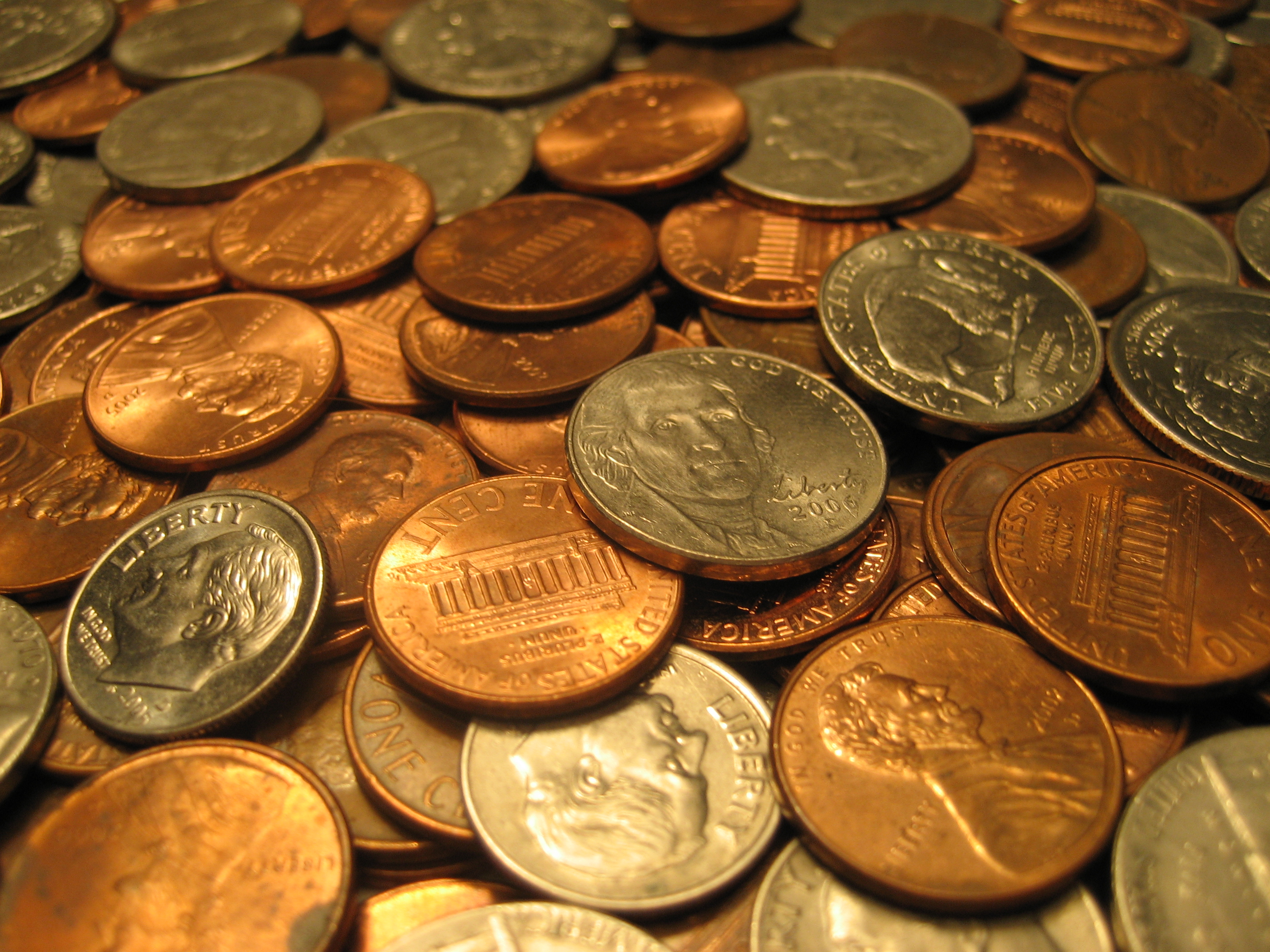 You may be familiar with good luck charms from your own culture, but what about other symbols of luck from around the world? Some of these symbols are seen as lucky. Other symbols as seen as having the ability to bring good fortune. Different cultures also have symbols forwarding off bad fortune or luck. A couple of these symbols are seen as wish makers. Here are the most popular symbols of luck from around the world
You may be familiar with good luck charms from your own culture, but what about other symbols of luck from around the world? Some of these symbols are seen as lucky. Other symbols as seen as having the ability to bring good fortune. Different cultures also have symbols forwarding off bad fortune or luck. A couple of these symbols are seen as wish makers. Here are the most popular symbols of luck from around the world
27 Popular Good Luck Charms
Insects
Crickets
These insects are considered good luck in Asia. Crickets have also made their way into pop culture, including Cri-kee in Disney's Mulan and Jiminy Cricket in Pinocchio. There was also The Cricket in Times Square from the great Chuck Jones.
These insects are considered good luck in Asia. Crickets have also made their way into pop culture, including Cri-kee in Disney's Mulan and Jiminy Cricket in Pinocchio. There was also The Cricket in Times Square from the great Chuck Jones.
Ladybugs
When a ladybug lands on you it is said to be good luck. Killing a ladybug is considered bad luck.
When a ladybug lands on you it is said to be good luck. Killing a ladybug is considered bad luck.
Dragonflies
Dragonflies are another lucky insect. The dragonfly was once considered to be a sign of a "good rice harvest." (Twin Groves Museums in the Classroom)
Dragonflies are another lucky insect. The dragonfly was once considered to be a sign of a "good rice harvest." (Twin Groves Museums in the Classroom)
Scarabs
Scarabs date back to Ancient Egypt, when scarabs where considered good luck beetles. (Luckfactory.com)
Scarabs date back to Ancient Egypt, when scarabs where considered good luck beetles. (Luckfactory.com)
Natural Objects
Acorns
In Norse folklore, both the acorn and its bearer, the oak tree bring good fortune. A lone acorn is also thought to ward off lightening when placed in a windowsill. For more about the acorn and oak trees, read Superstitions About the Oak Tree and the Acorn.
In Norse folklore, both the acorn and its bearer, the oak tree bring good fortune. A lone acorn is also thought to ward off lightening when placed in a windowsill. For more about the acorn and oak trees, read Superstitions About the Oak Tree and the Acorn.
Rainbow
Rainbows are considered lucky because we all know if we find the end of the rainbow there will be pot of gold. A rainbow also has seven easily discernible colors. The number seven is mentioned below.
Rainbows are considered lucky because we all know if we find the end of the rainbow there will be pot of gold. A rainbow also has seven easily discernible colors. The number seven is mentioned below.
Gems and Minerals:
Animals
Dolphins
Dolphins are considered lucky in many different cultures including the Ancient cultures of Greece, Sumer, Egypt, and Rome. For "Christians and Native Americans, the dolphin is a symbol of protection, and its image is said to bring good luck." (Ancient Spiral)
Dolphins
Dolphins are considered lucky in many different cultures including the Ancient cultures of Greece, Sumer, Egypt, and Rome. For "Christians and Native Americans, the dolphin is a symbol of protection, and its image is said to bring good luck." (Ancient Spiral)
Pigs
Pigs are considered a symbol of good luck in Germanic cultures.
Pigs are considered a symbol of good luck in Germanic cultures.
Tortoises


Tortoises are considered a good luck symbol in Feng-Shui decorating.
Elephants
Feng Shui and the Ganeshsa is the Hindu God of Luck. The elephant has also made its way into British, Canadian and United States cultures as a good luck charm in the 1930s. (Luckymojo.com)
Feng Shui and the Ganeshsa is the Hindu God of Luck. The elephant has also made its way into British, Canadian and United States cultures as a good luck charm in the 1930s. (Luckymojo.com)
Red Bats


Red bats are considered lucky in China. The red bat is thought to ward of evil. Five red bats can also represent the "five good fortunes" of health, love, longevity, love, wealth and virtue (Whats-your-sign.com)
Tigers
Tigers are considered lucky in Chinese astrology. The tiger is also considered a protector against certain evils including theft and fire. (Usbridalguide.com)
Animal parts, not as attractive as symbols of whole animals, are also thought to be lucky. A rabbit's foot in Western cultures is generally lucky, and alligator teeth are said to bring luck to gamblers (Africa).
Tigers are considered lucky in Chinese astrology. The tiger is also considered a protector against certain evils including theft and fire. (Usbridalguide.com)
Animal parts, not as attractive as symbols of whole animals, are also thought to be lucky. A rabbit's foot in Western cultures is generally lucky, and alligator teeth are said to bring luck to gamblers (Africa).
Icons and Figures
Buddha
A Buddha charm or statue is thought of as being lucky, especially if you rub the Buddha's belly.
A Buddha charm or statue is thought of as being lucky, especially if you rub the Buddha's belly.
Saint Christopher
As the patron saint of travelers, it is common for Catholics to have a Saint Christopher cross in their car.
As the patron saint of travelers, it is common for Catholics to have a Saint Christopher cross in their car.
Man-Made Objects
Dream Catchers
Dream catcher, from Native American culture are considered good fortune because they catch the negative images from dreams.
Dream catcher, from Native American culture are considered good fortune because they catch the negative images from dreams.
Red Chinese Lanterns
Red Chinese Lanterns are another red symbol of luck in the Chinese culture.
Red Chinese Lanterns are another red symbol of luck in the Chinese culture.
Horseshoe
Horseshoes were thought to bring good fortune when they were hung up on the wall of a home or above a doorway. When horseshoes were made by blacksmiths, this added to the idea of luck that embodies the horseshoe. Blacksmithing was considered a lucky trade. (CSIOP)
Horseshoes were thought to bring good fortune when they were hung up on the wall of a home or above a doorway. When horseshoes were made by blacksmiths, this added to the idea of luck that embodies the horseshoe. Blacksmithing was considered a lucky trade. (CSIOP)
Coins


"See a penny pick it up and all day long you'll have good luck. Leave it there and you'll despair." Some even take the idea of luck to the other side of the coin, and believe that if the coin is face down that it's best to leave it on the ground.
Coins have a place in Feng Shui as well, as luck bringers.
Coins have a place in Feng Shui as well, as luck bringers.
A Pot of Gold
A pot of gold is what you will find at the end of a rainbow, making it doubly lucky.
A pot of gold is what you will find at the end of a rainbow, making it doubly lucky.
Symbols and Numbers
Nautical Star
The Nautical Star is seen as providing guidance, and it is a good luck symbol for sailors.
The Nautical Star is seen as providing guidance, and it is a good luck symbol for sailors.
The Number Seven
The number seven is considered lucky by different cultures including the U.S. culture. The number seven is also considered a lucky number by people living in England (Wikiepdia.org). It's not just Western culture that holds the number seven in high regard on the luck scale.
In the mythology of Japan, there are the Seven Gods of Fortune.
The number seven is also important in world religions and spiritual beliefs including Buddhism, Hinduism and Christianity.
The number seven is considered lucky by different cultures including the U.S. culture. The number seven is also considered a lucky number by people living in England (Wikiepdia.org). It's not just Western culture that holds the number seven in high regard on the luck scale.
In the mythology of Japan, there are the Seven Gods of Fortune.
The number seven is also important in world religions and spiritual beliefs including Buddhism, Hinduism and Christianity.
Plants
Four Leaf Clover
The Four Leaf Clover is one of the better known Western symbols of luck, probably due to is popularity on St. Patrick's Day. Four-leaf clovers do exist, they just are not as common as the three-leaf variety. (Flora Brittanica). If you find one, it's considered good luck.
The Four Leaf Clover is one of the better known Western symbols of luck, probably due to is popularity on St. Patrick's Day. Four-leaf clovers do exist, they just are not as common as the three-leaf variety. (Flora Brittanica). If you find one, it's considered good luck.
Bamboo
Although considered invasive by some, a gift of bamboo is considered good luck (Feng-shui-products-decorating-tips.com), specifically the Dracaena (botanical name) Lucky Bamboo.
Although considered invasive by some, a gift of bamboo is considered good luck (Feng-shui-products-decorating-tips.com), specifically the Dracaena (botanical name) Lucky Bamboo.
Wish Makers
A Wishing Well
A wishing well is a place where you toss a coin (another symbol of good luck) and make a wish. Wishing wells can be seen in children's programming on shows like Dragon Tales. Another fun example of a wishing well in popular culture is the wishing well the movie Goonies.
Wishbone


A wishbone is a symbol of good luck. It also is a wish maker. Two people tug on the wishbone, each making a wish. After the wishbone breaks, the person with the bigger piece will have their wish granted.
Stray Eyelash
A stray eyelash is seen as a wish maker, much like the wishbone. If a stray eyelash falls upon your cheek, place it on your finger and make a wish. Then blow the eyelash away.
A stray eyelash is seen as a wish maker, much like the wishbone. If a stray eyelash falls upon your cheek, place it on your finger and make a wish. Then blow the eyelash away.
Falling Star
A falling star or a "shooting" star as it is sometimes called asks the person lucky enough to see it to make a secret wish.
A falling star or a "shooting" star as it is sometimes called asks the person lucky enough to see it to make a secret wish.
Sources
Ancient Spiral, http://www.ancientspiral.com
Artsmia, http://www.artsmia.org
Avenefica, http://avenefica.wordpress.com
CSIOP, Committee for Skeptical Inquiry, csicop
Feng-Shui Products, http://www.feng-shui-products-decorating-tips.com
Twin Groves, http://www.twingroves.district96.k12.il.us/wetlands/Dragonfiles/DragonFliesHist.html
US Bridal Guide, http://www.usbridalguide.com
What's Your Sign, http://www.whats-your-sign.com
Artsmia, http://www.artsmia.org
Avenefica, http://avenefica.wordpress.com
CSIOP, Committee for Skeptical Inquiry, csicop
Feng-Shui Products, http://www.feng-shui-products-decorating-tips.com
Twin Groves, http://www.twingroves.district96.k12.il.us/wetlands/Dragonfiles/DragonFliesHist.html
US Bridal Guide, http://www.usbridalguide.com
What's Your Sign, http://www.whats-your-sign.com
Tidak ada komentar:
Posting Komentar